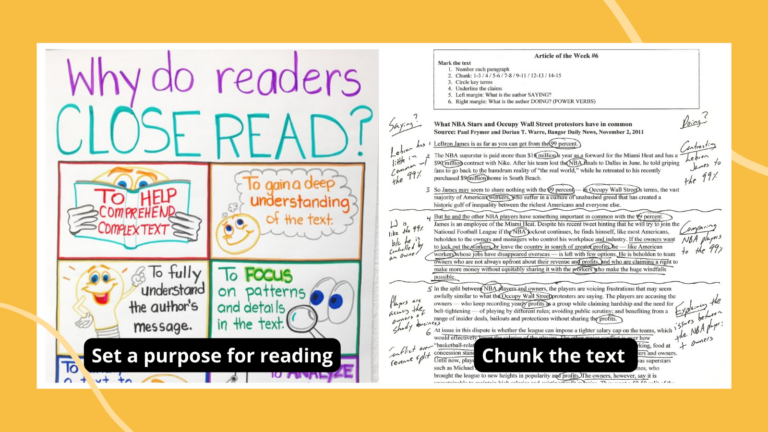Close reading has a reputation for being drudgery. Sure, the intense, focused reading and rereading of text that defines close reading does sound like, well, hard work. A recent Dangerously Irrelevant post asks whether or not close reading will kill the joy of reading. Of course, I argue, no! Quite the opposite.
Close reading should be so engaging that it enhances the joy of reading. Close reading is most effective when students find close reading to be fun. By fun, I don’t mean easy or mindless. I’m thinking about what Dr. Seymour Papert termed “hard fun”. It’s the way Olympic athletes train, artists perfect, musicians practice, it’s not easy, but it is rewarding, enjoyable, even fun.
Here are five features of close reading instruction that make students want and love to read.
Text Selection
Passages don’t have to dense and dry to be worth a close read. Choosing novel excerpts, articles, poems, even images or movie clips that address big ideas, even if they’re from modern sources, accomplish the same instructional objectives as reading Twain or Bronte. A bonus, using contemporary YA material means your students will likely have loads of background knowledge to apply to a cold read.
Engaging Questions
Is our destiny malleable or fixed? Should government make decisions for us? Why do we need love? When questions invite students into discussions that have engaged humans for centuries, they captivate student interest and prompt rousing discussion.
Students Take Control
One of the tenants of close reading, the purposeful rereading of text, allows students to take ownership. The more students read, the more they can take a leadership role in the discussion. As students read and reread, look for opportunities to step back and let students take the reigns.
Collaboration
Far from silent reading or quiet work time, close reading lessons should be peppered with lively discussion and Aha! moments. Collaborative discussion allows students to put text evidence into practice and to share and refine their ideas. Provide time for students to work together during readings, before writing, and in discussion to make close reading a shared experience.
Debate and Argument
Students—middle schoolers especially—love to debate. Draw the connection between crafting strong, logical arguments and winning debates and you’ll have them hooked. (For examples of how debate currently plays out, check out the Intelligence Squared U.S. podcasts.)
Samantha Cleaver is a former special education teacher, education writer, and avid reader. Her book about close reading is forthcoming in 2015 from Rowman and Littlefield (www.rowman.com). Read more at her blog: http://cleaveronreading.wordpress.com.

